| TennisOne Lessons Evolving a Loop Swing that Fits! Dave Smith TennisOne Senior Editor It has often been said, "There are many ways to hit a tennis ball." This becomes readily apparent if you watch the pros play. No two hit the ball in exactly the same way. It has been well documented by many of the top teaching pros that a loop swing adds to nearly every topspin groundstroke, and I fully agree. Yet there are many differences in the way the loop is executed.
The counterpoint of a loop swing would be one that is simply called a ‘straight back’ backswing. There are advantages and disadvantages to both strokes, but clearly, the preferred stroke on the pro tours is one that includes some definitive loop. The advantages to the straight-back backswing is that the player can start the forward aspect of the stroke from a specific point and create some repetitive control in hitting low to high from this point. It can offer a very early preparation element that can be helpful to beginners. The loop swing provides for a quantifiable amount of added energy afforded by the dropping of the racquet with the assistance of gravity to generate initial momentum before the forward and upward contact phase of the stroke. The loop also creates a level of rhythm and force that comes from the longer distance in which the racquet travels without pause. The kinetic chain of the body parts combined with the angular momentum derived by this longer rotational aspect of the elliptical path the racquet takes without pause is a good reason why we see so many pros today using a significant loop on their ground strokes.
However, the concept of how to successfully train for the loop swing provides fodder for many tennis discussions! Some pros insist that starting players with the loop swing is the best way. Others say the straight back, low-to-high swing is the better way to start beginners. In this article, I will discuss a methodology that can help everyone develop the right loop for them. Ever watch the pros play? Of course you have. Ever notice their varied backswings and the different loops they take on route? Some start really high; others start lower. Some loop later, ‘stalking the ball’ before the loop and then swing, others stalk with the racquet fairly far back. And still others have nearly no loop at all. Look at Lleyton Hewitt or the William’s sisters backhands. These are nearly as straight back as Jimmy Connor’s forehand was twenty years ago! Such differences beg the question, “Which one is best to acquire?” Perhaps a better question is, “Which method of learning will allow a player to develop the loop swing that works best for them?”
The key word here is develop’ Before I get deeper into this discussion, let me share a bit of my experience. For 32 years, I have taught many thousands of players. While I have taught essentially the same general philosophy over the past 8 or 10 years to every player, no two players of mine play exactly alike. Change and evolution, I believe, is based on several factors that are rooted within a player’s personality. That is, players with aggressive personalities tend to exaggerate certain stroke elements as they progress. Those who are reserved tend to do just the opposite. Players who are outgoing and fairly flamboyant tend to experiment more and don’t fear failure while working within such experimental aspects. Thus, the concept of producing ‘tennis clones’—as some people accuse some teachers of doing—is essentially impossible. You can teach 100 students the exact same methodology and you will see each player evolve such techniques into fingerprints of individuality.
I have found that, because of this unique pattern of progression, assigning a specific loop may not end up being the right loop. This conclusion has helped me develop a progressive learning pattern in regards to the loop argument. I’m not saying this may be the best way for every individual, as someone may indeed be introduced to the best loop shape or size by sheer luck. However, I have found that the progression I am presenting does not prevent a single player from developing an effective loop swing. So, I am sharing it here with you in hopes it offers another look into this controversial aspect of the backswing. Progression After watching a particular group of pros teach for a couple years, pros who insist on teaching a very defined and specific loop swing, I noticed two distinctive patterns: First, some beginners, (and intermediates, too), would start with the loop but fail to get the racquet below the ball to hit topspin. Many of them would slice down from the high loop start and never get the feel of the brush up associated with a proper topspin stroke. Second, some players hit with the loop but were uncomfortable from the start and didn’t progress to a comfortable rhythm.
It is not to say that a student can’t eventually gain comfort or rhythm within this method of learning the loop. In fact, I believe that most players can develop the prescribed loop eventually. The problems I have with this assumption is that some players may not develop the loop at all using this method, and some players may not acquire a loop that they could be best at by force-feeding them a particular loop backswing. Straight Back Progression The problem some teaching pros have with the straight back backswing is that they believe players will only use this swing element and never deviate or evolve the stroke into the loop swing. From my experience, this is almost never the case. I have had a few players not develop a loop swing within the expected period of time. While those students may not have developed the loop early on, the straight back backswing never once prevented a student from learning to hit with topspin. Encouraging the Loop Once a player demonstrates the topspin, low-to-high swing pattern, they almost always evolve this swing into a progressive loop pattern on their own. However, as I mentioned, occasionally, we need to encourage this exploration. There is a simple loop drill that many pros use. I can’t remember the first time I learned this drill but it had to be about twenty years ago when I still taught tennis in California, therefore, I can’t offer the name of the person who may have first developed the drill. It is, however, the best I have used in developing the loop swing after the student has the feel of brushing up the back of the ball from the low-to-high swing we start them with.
The drill works like this. The pro holds a racquet or other object above the contact point of the student’s swing. With his other hand, the pro drops a ball in front of his racquet. The student brings his racquet over the pro’s racquet, down below it, and then up under the pro’s racquet to brush up on the ball. The physical position of the pro’s racquet teaches the student very quickly to loop up and over, down ,and back up through the ball. Once the student has felt the rhythm of this swing, the pro can take his racquet away and the student repeats the loop swing with the thought that the racquet is still there! This simple drill is usually only necessary for a few minutes and not more than a few sessions for the player to understand and feel very comfortable with a loop swing. After a short period of time, the student will indeed have the makings of a loop swing that feels right and comfortable for his style and personality. Conclusion The shear quantity of pros who use the loops swing coupled with the general studies done showing the slight increase in efficiency and power, would dictate that the loop swing is very desirable. For most players, the introduction to the loop early on is also encouraged. However, I highly recommend that those who do teach the loop swing exclusively, understand that if a student does not achieve the desired topspin swing pattern—that is, getting below the ball first—all is not lost. You can have the student go to a straight back backswing to to get the racquet under the ball then move on to your loop instruction. It is a very natural progression. I have found that players who are not as athletically ‘gifted’ can learn to hit topspin faster with greater progression by starting with the straight back pattern first. More gifted athletes, those who know their body and can control an implement well, can move to the loop very quickly - even within a first lesson! But remember that almost all players will develop the loop swing naturally and within a pattern they feel most confident and proficient with. Your comments are welcome. Let us know what you think about Dave Smith's article by emailing us here at TennisOne .
TENNIS MASTERYFinally. a resource that unlocks these mysteries: • Why do m • Why are making changes in one's game so frustratingly difficult? • What tennis teaching methods are disruptive or detrimental to player progression? Read David W. Smith's TENNIS MASTERY and learn not just how to avoid playing at mediocre levels, but how the best players in the world Master the sport of tennis! "With a depth of knowledge and fresh perspective, TENNIS MASTERY is set to become a manual for tennis instructors and a measure for tennis literature." Richard Wigley, Director, Kayenta Tennis Center, Ivins Utah. Take in David Smith's 30 plus years in the tennis teaching industry. This 335-page manual will provide for every level of player as well as support for all tennis-teaching professionals, a blueprint for reaching higher levels of tennis mastery. Order TENNIS MASTERY at tenniswarehouse.com , or go to tennismastery.net for exciting excerpts from the book and a host of tennis information! And check out David Smith's other articles found here at TennisONE.com Learn more from Dave Smith at his Desert Shadows Tennis Institute!
Next available DSTI camps are November 28th - 30th and December 5th - 7th! Space is limited! Call (435) 628-5000 and ask for the tennis pro shop to learn more about Desert Shadows Tennis Institute. Learn the Advanced Foundation, discover tools to master more advanced techniques for all strokes, and discover that staying at the same level you are is NOT AN OPTION! A select number of camps are available but space is very limited. The DSTI camps take place in St. George, Utah, in the heart of ‘Color Country’—the incredible beauty of Southern Utah. Zion, Bryce Canyon and Grand Canyon National Parks are all nearby! Hurry to reserve your spot now for a true ‘tennis destination’ opportunity! “The most informative, intuitive tennis camp I have ever attended.” Randy S. Colorado “Dave and his staff have a passion for the game and a personal care for their students.” S. Loo, Nevada “The depth of instruction is far superior to that of other tennis camps I’ve been.” Tom T. Nevada |

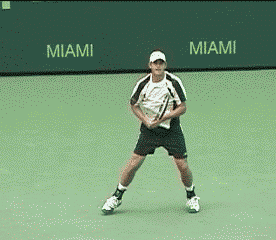
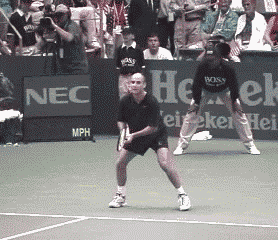
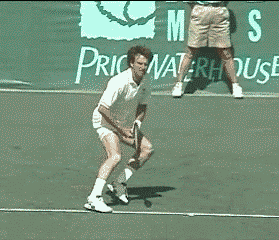
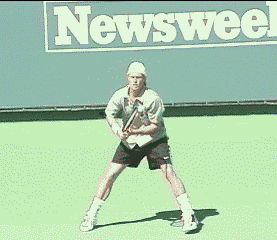
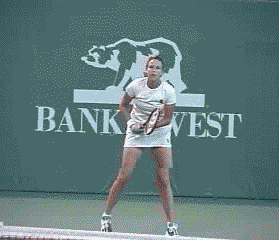
 illions of tennis players stagnate at levels far below their potential?
illions of tennis players stagnate at levels far below their potential?  Join Dave Smith in an intimate, ultimate tennis camp: Desert Shadows Tennis Institute (DSTI) is an intense, 3-day camp that accepts only 12 players to work directly with Dave and his staff of certified and accomplished pros. Over 18 hours of tennis instruction is included along with a copy of Dave’s best-selling tennis book, TENNIS MASTERY, a DVD of instruction, breakfast and lunch each day, and a lifetime of tennis secrets!
Join Dave Smith in an intimate, ultimate tennis camp: Desert Shadows Tennis Institute (DSTI) is an intense, 3-day camp that accepts only 12 players to work directly with Dave and his staff of certified and accomplished pros. Over 18 hours of tennis instruction is included along with a copy of Dave’s best-selling tennis book, TENNIS MASTERY, a DVD of instruction, breakfast and lunch each day, and a lifetime of tennis secrets!